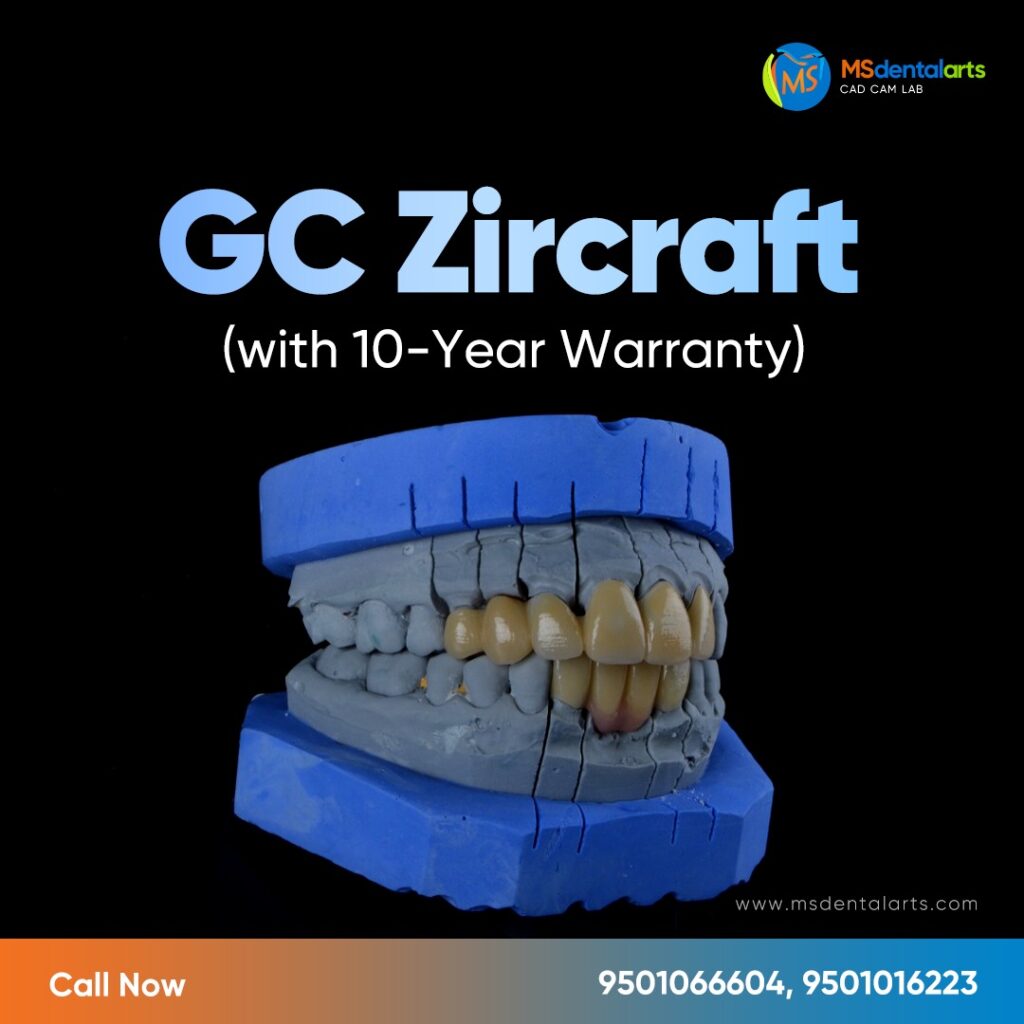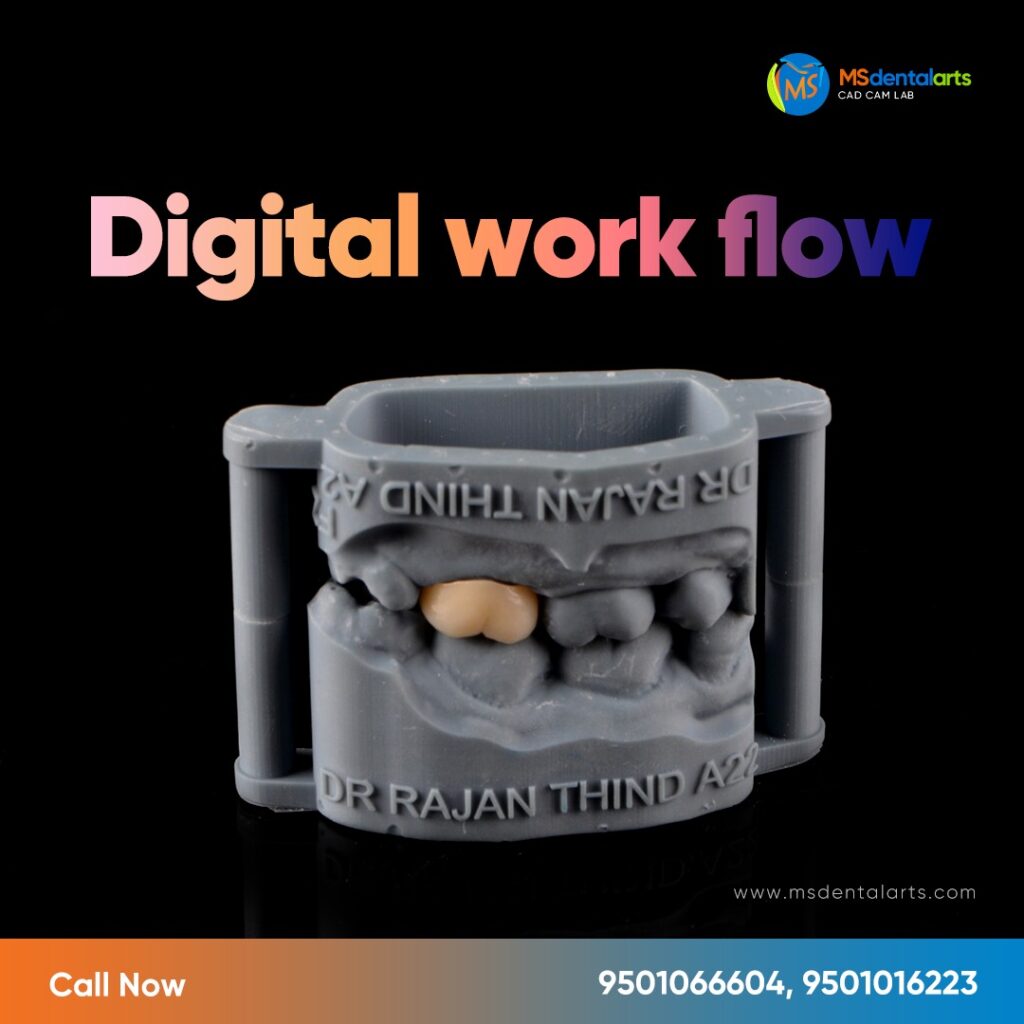By Sarfraz Ahmed

Because Zirconia (MS Zircraft) and porcelain restorations offer strength and natural looks, patients of today prefer them to metal-based crowns. Patients have been asking for milled Zirconia (MS Zircraft) restorations more frequently than porcelain-fused-to-metal (PFM) restorations ever since they were first introduced.
When recovering a single tooth, some dentists only recommend Zirconia (MS Zircraft) or all-ceramic restorations. The majority of dental offices are shifting away from using PFM and all-ceramic crowns in favour of using Zirconia (MS Zircraft) to make fixed tooth prostheses. Zirconia (MS Zircraft) is quickly replacing other materials as the preferred choice for creating dental crowns and other restorations due to its exceptional aesthetics and near-indestructibility.
Describe Zirconia (MS Zircraft) .
Worldwide, Zirconia (MS Zircraft) is a metal oxide that is made from zirconium, a metal belonging to the titanium family. Zirconia (MS Zircraft) is used to create common home objects like crockery, pipes, and electrical fixtures. Zirconia (MS Zircraft) is a perfect material for dental crowns due to its inherent strength and durability. For patients who require posterior crowns, which need to be strong to masticate food, Zirconia (MS Zircraft) crowns are the ideal option.
Describe PFM.
Porcelain-fused-to-metal (PFM) crowns blend porcelain and metal as their name implies. The porcelain overlay is color-matched to the original teeth, however if there is gingival recession, the darker metal hue may show at the gingival margin. PFM restorations are typically suggested by dentists for individuals who want strength and a natural appearance.
Why Choose Zirconia (MS Zircraft) Instead of PFM?
- Extraordinary Strength.
- Smile That Looks Natural.
- Durability and dependability
- Customization.
- more patient-safe.
1. Extraordinary Strength
For dental crowns, Zirconia (MS Zircraft) provides excellent strength and durability. In comparison to porcelain or PFM restorations, it is at least three times stronger. Zirconia (MS Zircraft) restorations can survive the stresses of bruxism and mastication because, unlike porcelain, it can sustain wear and tear without chipping. The crown on this tooth is practically unbreakable and made to survive the tough environment, especially in the back of the mouth, thanks to more recent monolithic Zirconia (MS Zircraft) (single, solid blocks of Zirconia (MS Zircraft) ).
2. Authentic Smiling
There is no metal lining in Zirconia (MS Zircraft) near the gingival margin. At the coronal aspect of the crown, porcelain-fused-to-metal (PFM) crowns have a metal layer underneath the porcelain layer. When patients smile, this metal lining is typically visible at the gingival margin. Zirconia (MS Zircraft) crowns completely do away with the metal lining, allowing patients to grin with assurance. Zirconia (MS Zircraft) crowns can also be customised to fit any size or form to match a patient’s other teeth.
3. Dependability and Strength
Zirconia (MS Zircraft) is even more resilient than the PFM ceramics that are often utilised. For instance, solid Zirconia (MS Zircraft) is more resistant to mastication and grinding because it has more stabilisers than PFM ceramics. Zirconia (MS Zircraft) restorations can last a patient their entire lifetime if well-maintained.
4. Personalization
Zirconia (MS Zircraft) can be produced in a variety of ways to meet the needs of the patient due to a variety of parameters, including chemical composition and manufacturing requirements. This personalization reduces the room for error and guarantees a perfect fit for each person.
5. Patients are Safer
Patients who have allergic reactions to the alloys in PFM restorations won’t develop allergies because of Zirconia (MS Zircraft) ‘s high biocompatibility. Zirconia (MS Zircraft) has exceptional biocompatibility, which makes the crowns and bridges made from it quite safe for use in clinical settings.
Since many years ago, Zirconia (MS Zircraft) restorations have been utilised effectively and offer patients great strength, longevity, and realistic-looking aesthetics. These older-style restorations are becoming obsolete because Zirconia (MS Zircraft) is currently in greater demand than PFMs.
To arrange a meeting with our technical team, click here.



